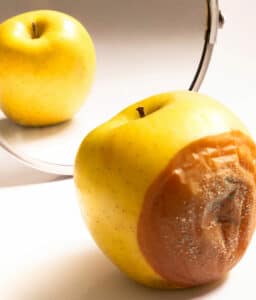Breathing techniques for better health, stress relief and well-being
Breathing is usually an unconscious process. We inhale and exhale 12 to 20 times a minute and 17,000 to 30,000 times daily.
Breathing is one of the essential functions of the human body, providing the body with oxygen but also helping to clear the mind and strengthen the muscles.
Breathing properly can have a positive effect on both our health and well-being.
For example, deep breathing can activate the parasympathetic nervous system and thus regulate heart rate, blood pressure and respiratory rate. By shifting attention away from distracting thoughts, mindful breathing can help increase focus, control emotions, and reduce stress and anxiety.
In turn.
Improper breathing can disrupt the exchange of oxygen and carbon dioxide and contribute to anxiety, panic attacks, fatigue and other physical and emotional disturbances.
The process of breathing
Before we look at the different breathing techniques, let’s learn a little about how our body breathes:
- Inhalation – the diaphragm contracts, and the chest expands. The volume of the chest cavity increases, the air pressure in the lungs decreases, and air flows into the lungs through the nose or mouth.
- Gas exchange in the lungs – air travels through the bronchial tree, the branched airway system. The smaller airways, called bronchioles, lead to small air sacs called alveoli. It is in the alveoli where the actual exchange of gases takes place.
- Oxygen diffusion – oxygen diffuses through the thin walls of the alveoli into the surrounding capillaries and binds with haemoglobin in red blood cells to form oxyhaemoglobin.
- Oxygen transport – the oxygen-rich blood is transported to the heart, from where it flows throughout the body.
- Cellular respiration – oxygen from the red blood cells enters the cells where it is used to produce energy (in the form of ATP) from nutrients.
- Carbon dioxide release – during energy production, carbon dioxide is formed in the cells as a metabolic waste product. It enters the bloodstream and is transported back to the lungs.
- Exhalation (ventilation) – the diaphragm and chest muscles relax, the volume of the chest cavity decreases, the air pressure in the lungs increases, and the air rich in carbon dioxide is forced out of the lungs.
- Fresh air is again drawn into the lungs to start the next breathing cycle.
This cyclic process repeats continuously, allowing the body to maintain a balance between oxygen uptake and carbon dioxide removal, supporting cellular function and overall metabolism. Respiration in response to changes in oxygen and carbon dioxide levels is regulated by the respiratory centre in the brain stem.
Relation of breathing to health
All our body systems depend on oxygen. Effective breathing not only provides greater mental clarity but can also improve the quality of sleep, help digest food more efficiently, boost immunity and reduce stress.
Many people who practise yoga (especially pranayama, or breath control) are shown to be able to influence the sympathetic nervous system and regulate their heart rate and blood pressure.
Correct breathing
It all starts with the correct posture. Sitting upright allows the lungs to expand quickly and efficiently as we inhale – this helps air to flow into the lungs and carbon dioxide to flow out of the lungs unhindered.
If you are sitting at your desk and feel your mind starts to fog up, straighten your back, and you will notice an immediate improvement as the amount of oxygen in your blood increases and your brain gets more of it.
Most people only breathe out about 70% of the carbon dioxide contained in their lungs, so to improve your breathing, you need to focus not only on inhaling maximally but also on exhaling. Try to push all the air out of your lungs as if you were blowing bubbles, and your body will reward you with an immediate burst of energy.
Use your nose
Breathing through your nose can slow your breathing and make your lungs work more efficiently. This also facilitates the absorption of nitric oxide, improving oxygen transport throughout the body.
Breathing through the nose allows the nostrils to:
- Filter toxins and allergens, thus preventing them from entering the body.
- Warm up air that is too cold.
- Humidify air that is too dry.
Use your tummy
The most effective way of breathing is deep or diaphragmatic breathing, where the diaphragm contracts and moves downwards as you inhale, allowing the lungs to expand and fill with air as much as possible.
The increase in lung volume and the intake of more air promotes a more efficient exchange of gases, thus allowing more oxygen to be absorbed.
During diaphragmatic breathing, the abdomen expands on inhalation and contracts on exhalation.
How to breathe properly during a workout, read HERE.
Breathing techniques for better health, stress relief and well-being
Breathing exercises can be used for a variety of purposes, including stress reduction, improving oxygen intake, improving attention, concentration and sleep quality, regulating the vegetative (or autonomic) nervous system…
By incorporating breathing exercises into our daily routine, we can promote both mental well-being and physical health – from managing stress and anxiety to improving athletic performance.
Here are some breathing techniques that I think are worth practising:
Diaphragmatic or deep breathing
- Take a deep breath through the nose, allowing the diaphragm to expand.
- Exhale slowly through the mouth, allowing the abdomen to retract.
Effects – Activates the body’s relaxation response, reduces muscle tension, increases oxygen uptake and helps manage stress.
Box breathing
- Slowly inhale through the nose counting to four.
- Hold your breath for four seconds.
- Exhale slowly through the mouth counting to four.
- Hold your breath for four seconds.
Effects – Helps to regulate breathing, calm the nervous system, improve concentration and balance the autonomic nervous system.
Alternate nostril breathing (Nadi Shodhana)
- With your thumb, close one nostril and inhale through the other nostril.
- Then, with your thumb, close the other nostril and exhale through the first nostril.
- Repeat the same on the other side.
Effects – This technique is said to balance energy, calm the mind (reduce stress) and improve mental clarity.
4-7-8 Breathing
- Calmly inhale through the nose, counting to four.
- Hold your breath, counting to seven.
- Slowly exhale fully through the mouth, counting to eight.
Effects – slows the heart rate, induces relaxation and may help you fall asleep.
Breathing awareness or Mindful breathing (Shamatha)
Focus on the breath, observe and be aware of it without trying to control it. Whenever your thoughts turn to something else, bring your attention back to your breathing.
Effects – improves concentration, promotes mindfulness, and reduces stress and anxiety.
Resonant or coherent breathing
Breathe approximately five times per minute (5 inhalations and 5 exhalations), aiming for a smooth and even inhalation and exhalation.
Effects – improves cardiovascular function, promotes autonomic nervous system balance and reduces stress.
Breath counting
- Inhale, exhale and count “one”.
- Inhale again, exhale and count ‘two’.
- Continue counting to ten and then start again. If your thoughts drift to something else, go back to “one”.
Effect – improves concentration and awareness.
Kapalbhati
Kapalbhati is a rapid breathing exercise practised to clear the mind.
- Sit on the floor or a chair with a straight back. Place your hands on your knees, palms facing upwards.
- Inhale deeply through the nose, expanding the chest and diaphragm.
- Exhale quickly and forcefully through the nostrils, tensing the abdominal muscles and trying to bring the navel closer to the spine.
Repeat the exercise about 20-30 times, gradually increasing the number of times.
After the desired number of inhalations/exhalations, inhale deeply and exhale slowly. Allow your breathing to return to a normal rhythm.
In this exercise, the emphasis is on exhaling rapidly and forcefully, while the inhalation should be passive.
Effects – increases energy levels, clears the mind and stimulates the abdominal organs.
Pursed lip breathing
- With the mouth closed, inhale slowly through the nose 2 times.
- Press your lips together as if you were about to whistle.
- Exhale through the mouth, slowly blowing air through the pursed lips, counting to four.
Effect – improves breathing efficiency (promotes more efficient gas exchange) and reduces shortness of breath.
This exercise is particularly useful for people with breathing difficulties as it encourages slower and longer exhalation, which helps to prevent air retention in the lungs, allowing better removal of carbon dioxide.
It can also be very useful for everyday activities such as bending down, lifting weights or climbing stairs.
Combining breathing and guided visualisations
Combine deep breathing with imagery – when doing deep breathing exercises, imagine a peaceful scene or a place associated with positive memories or emotions.
Breathe in positive thoughts/energy and breathe out any tension or negativity.
Effect – promotes relaxation and positive thinking.
Breathing to relieve muscle tension
This breathing exercise can help relieve muscle tension throughout the day. It should be done in the morning, before having breakfast.
- Stand up straight and lean forward. Bend your knees slightly, letting your arms hang freely close to the floor.
- Inhaling slowly and deeply, raise your body slowly to a standing position, with your head raised last.
- Exhale slowly, returning to the original position.
- Slightly stretch the muscles and repeat.
Breathing for side pain
Those who start exercising, especially runners, tend to feel a stabbing pain in their side.
It is a diaphragmatic spasm due to tension (accelerated breathing during exercise). They tend to disappear with time as physical performance increases.
But while you are improving your fitness, diaphragmatic or deep breathing can help with side pain.
During running, continue to breathe deeply using your abdomen – now and then, take a very deep breath and exhale forcefully, pushing all the air out of your lungs. During the exhalation, you can stop, lower your shoulders, swing your arms and relax a little by walking at a slow pace. Take another deep breath and keep running.
Key takeaways
We enter the world by inhaling, and we leave it by exhaling.
Breathing is so vital that mankind long ago recognised its importance and began trying to control it to improve the functioning and well-being of the body and mind.
As early as the first millennium BC, the Chinese Tao religion and Hinduism saw breathing as a manifestation of energy or life force. The Chinese call it Qi, and the Hindus call it Prana (one of the basic concepts of yoga).
Evidence from research also shows that breathing properly can be an important element in effectively managing stress and anxiety and allows us to calm our bodies and minds.
You can try the breathing exercises described here straight away. Take your time, experiment with different breathing techniques, note your feelings and choose the exercises that suit you best.
If you have asthma or other medical problems related to breathing, consult your doctor before practising the breathing techniques described.
Breathe deeply, eat a balanced diet, move and – be healthy!

Help to maintain this site, create interesting articles and delicious low-calorie recipes!
Share this article
Follow me on Facebook
I recommend reading these articles as well

Athletic shoes
Types of sports shoes. What are the differences, and how to choose the most suitable and comfortable athletic shoes?

Food additives and E-numbers
What are food additives? How do they affect our health? How can we avoid them or at least reduce our intake?

How to find time for cooking and exercise?
How to prioritise your health, organise your schedule and find time for both cooking and workouts?

Breathing techniques for better health, stress relief and well-being
How to breathe properly? How does breathing affect our health? What breathing exercises are worth practising, and how do they help us?

